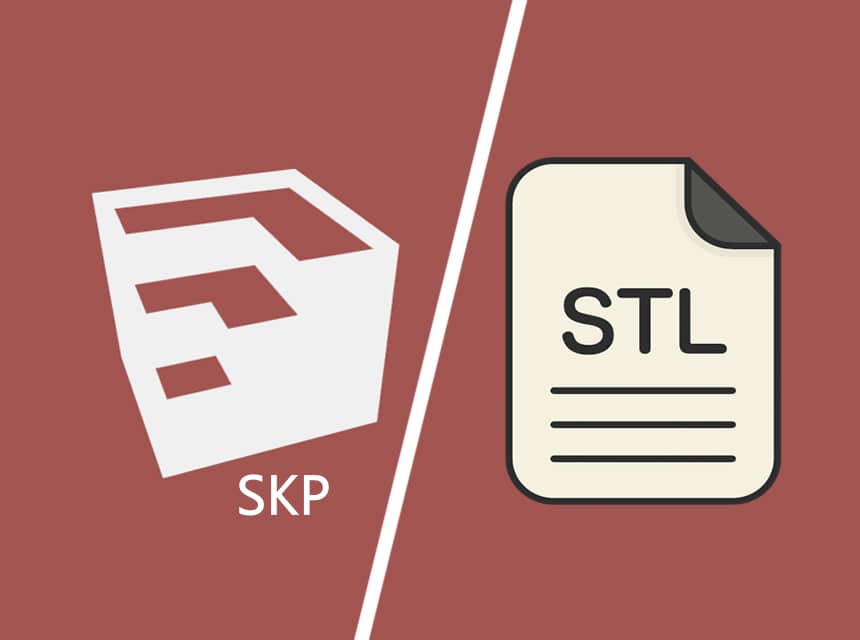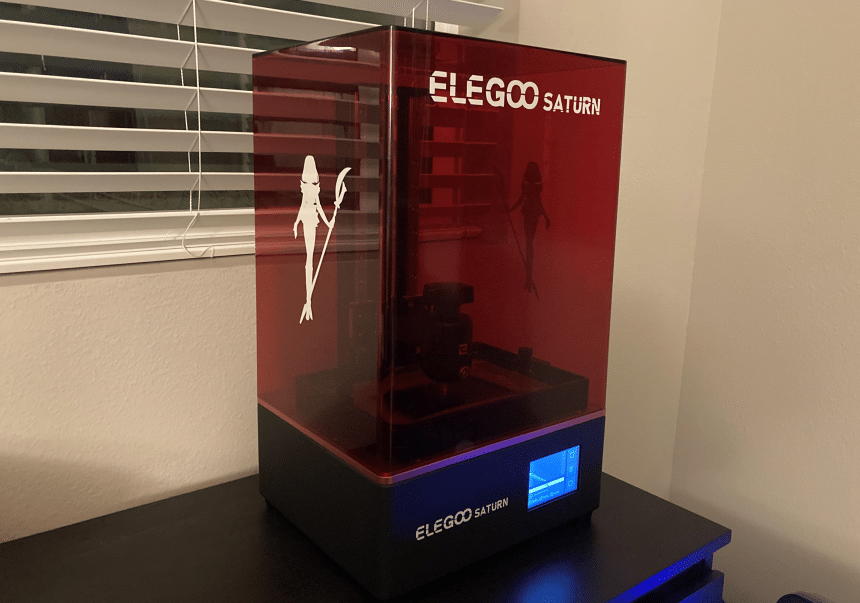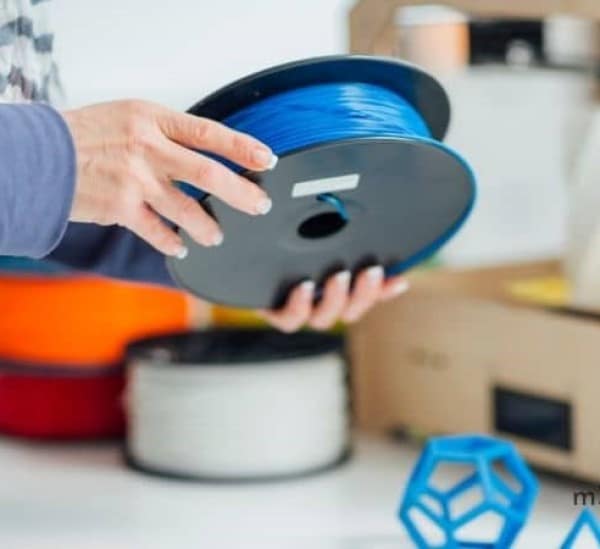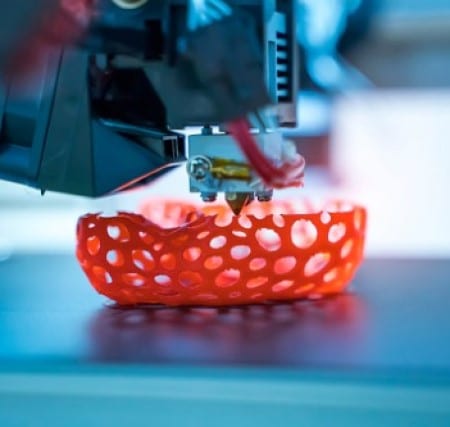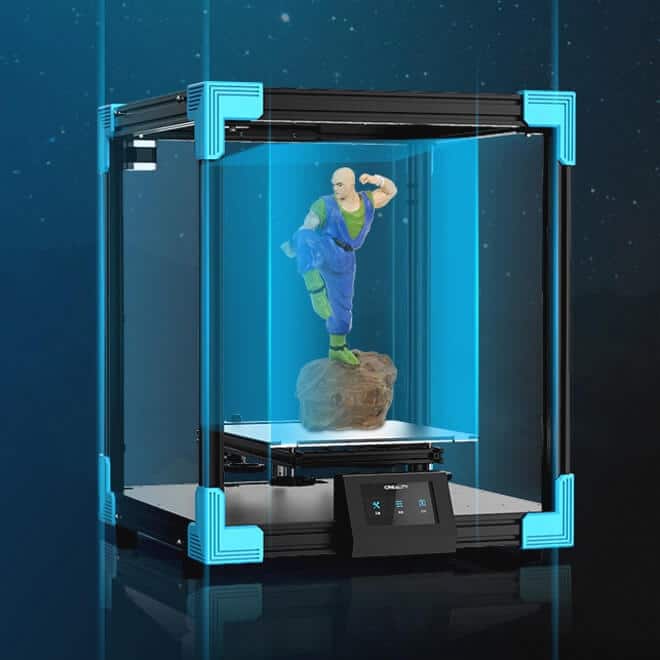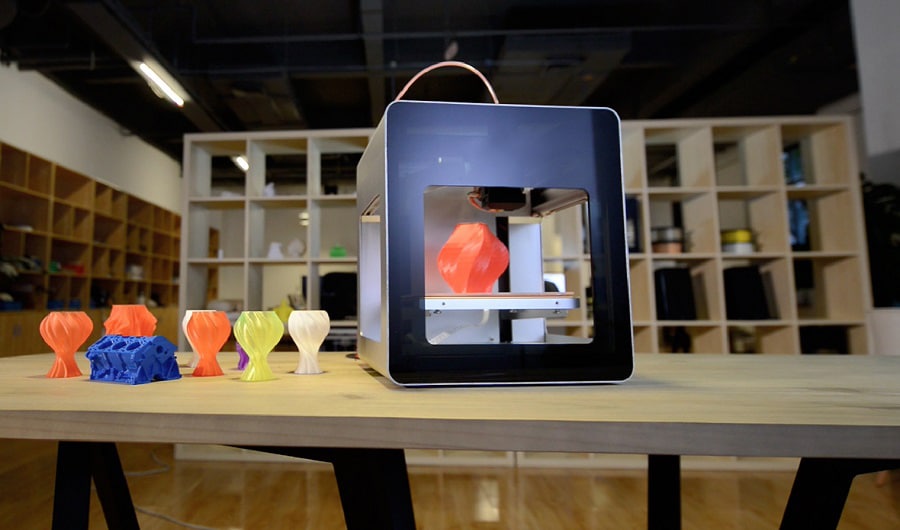

If you want to purchase a 3D printer for your home, you can choose between two types of technologies. This leads you to wonder, which is better for 3D printing, resin vs. filament technology? The technology you use for printing depends on what you will be using it for. In this guide, we will compare resin vs. filament printing and give you an idea of which one is the right type for you. Let’s take a closer look at both types.
Resin printing is called stereolithography/digital light processing (SLA/DLP) printers. These 3D printers work by using light to cure liquid resin into layers and will print a model with fine details. Some types of resin printers use an LCD to shine UV rays into the resin, and this cures it into a solid layer. Then, the print bed will rise slightly for the next layer cure. Resin printers Trusted Source Stereolithography - Wikipedia Stereolithography (SLA or SL; also known as vat photopolymerisation, optical fabrication, photo-solidification, or resin printing) is a form of 3D printing technology used for creating models, prototypes, patterns, and production parts in a layer by layer fashion using photochemical processes by which light causes chemical monomers and oligomers to cross-link together to form polymers. en.wikipedia.org provide you with quality models and usually require less post-processing work than a filament printer.
But on the downside, resin printers have a smaller build plate than an FDM printer, so it is not possible to make large pieces on them. The printing models also move slower than a filament, and you have to wash the model to get the complete result. There are quality resin printers that you can use for your model. You can consider using the ANYCUBIC Photon Mono X, as most users praise it for its quality printing and attention to detail.
On the other hand, filament printing Trusted Source Fused filament fabrication - Wikipedia Fused filament fabrication (FFF), also known as fused deposition modeling (with the trademarked acronym FDM), or called filament freeform fabrication, is a 3D printing process that uses a continuous filament of a thermoplastic material. en.wikipedia.org is called fused deposition modeling. This is a more popular kind of 3D printing and works with a string of plastic called a filament. The filament is melted through a hot end and imputed on the build plate. Each layer will be placed on the previous layer. FDM printing is used in a wide range of modeling applications and can produce larger items like helmets and armor for cosplay. Also, FDM printers are easy to assemble and use, so you can find them in different maker spaces. The printers are also cheap and reliable.
Another benefit of FDM printing is that it works great for making practical prints. You can use your printer to make materials with nylons and carbon fiber, and it can even be used to make moving parts. Filament printers don’t make models with fine detail like resin printers, but it still looks excellent as long as you use the right one. Based on online reviews, the ELEGOO Neptune 3 is a reliable filament printer with quiet operation, a removable touchscreen, and an RSG leveling system. The device comes fitted with special coating features and a reliable extrusion system.
When considering what to choose between a resin 3D printer vs filament, you should think about the kind of objects that you want to make.
Resin printers are good at making fine details and small parts, while filament printers can easily make large and strong parts.
If you want to build large-scale models, produce prototypes quickly, or make cosplay items like helmets and armor, then you should choose an FDM printer. On the other hand, if you’re hoping to make miniatures or board games, small parts, and detailed models, go for an SLA/DLP printer. Let’s take a closer look at the differences between the two printers.
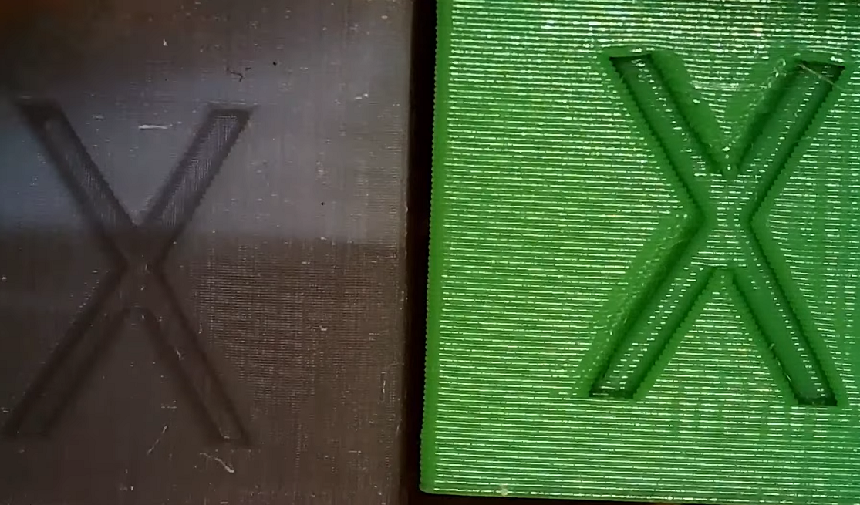
When considering the difference between 3D print resin vs filament devices, you should consider the quality of their models. Resin printers are known for having better print quality than their filament counterparts, resolving small details on prints and producing models with no visible layer lines. A resin print has layers, but they are as thick as about 25-50 microns and are not visible to the naked eye. You can notice the layers more when using a filament printer, as they are typically between 100 and 300 microns.
If you’re looking to print parts that require high accuracy or small, detailed objects, resin printers are more advisable.
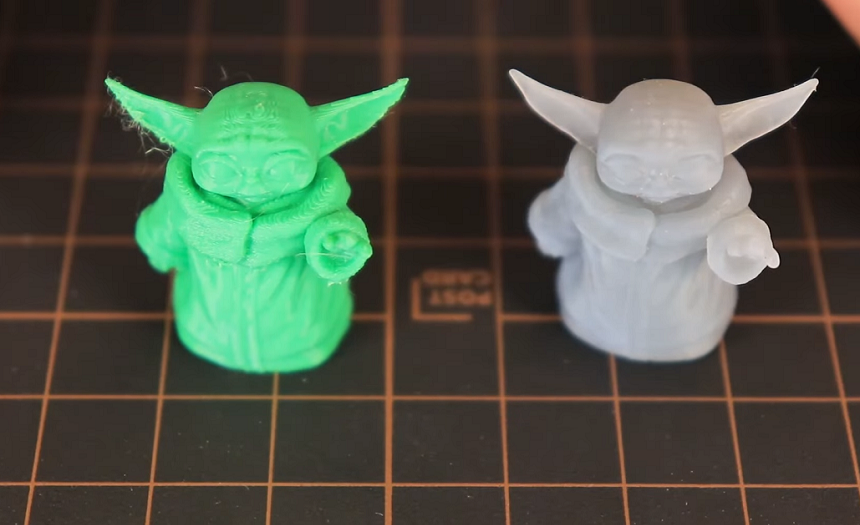
You get more strength and durability from your parts and models when using a filament printer, regardless of the material you use. You can use a basic plastic like PLA or stronger materials like ABS and PETG.
On the other hand, resin prints are mostly weak and brittle and cannot be used as functional parts. Also, resin reacts to UV, so exposing your resin model to sunlight can make it weaker. You can look out for some high-strength resins, but they are usually difficult to clean and can leave stickiness on the print.
For functional parts and strength, FDM printers are a better choice since it produces sturdy and larger models. But if you’re not concerned about strength, you can consider the resin printer.
Another way the resin and filament printers differ is by the cost. Before, resin printers were significantly costlier than filament printers. But now, there are budget-friendly resin 3D printers that cost similarly to entry-level filament 3D printers. So, there are many options available if you’re working with a budget, and our list of the best 3D printers under $1000 can help you narrow it down.
Filament printers can go from $150 to $5000, depending on the type you buy, as there are industrial-grade printers too. At the same time, the resin printers go from $175 to $4000. It’s important to check the features of the printer you want to buy and assess if it is worth the price.
You also have to consider the ongoing costs of the resin and filament printers. Ongoing costs will make up a large part of the total price, and they involve the cost of the materials, whether resin or filament. You will need to buy more materials if you are planning to print regularly or make larger models.
Another important part of 3D printers is the build volume, and if you’re looking to print larger models, filament printers are a better option. Even entry-level filament printers have a larger build volume than that resin printers. They have a smaller build volume, sometimes half of their filament counterparts. Even more premium and large-format resin printers are smaller than small-format filament printers. Before purchasing any resin or filament printer, you should consider the build volume specifications and compare that with your needs.
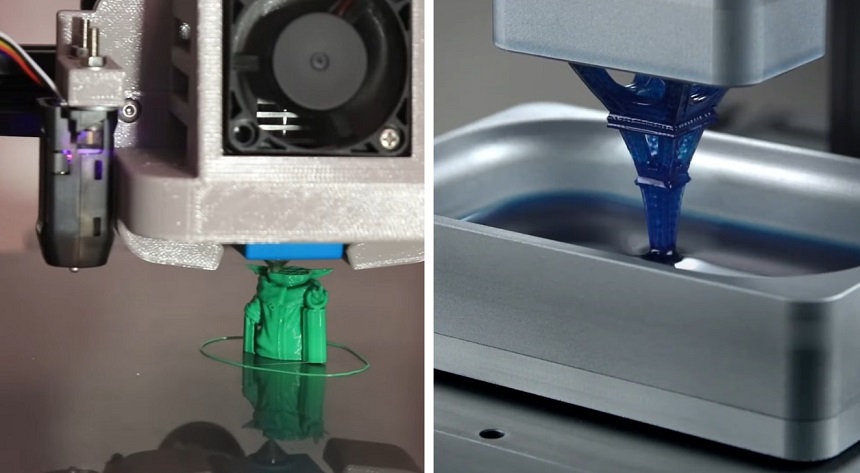
No one wants to sit around for a long time when using a 3D printer, which is why the printing speed is an important consideration. Filament printers produce single objects much faster than the resin printer if you are using the typical settings. Certainly, if you’re adding more objects to the print bed, the print time will increase because the nozzle has to trace each part individually.
On the other hand, resin printers are good at printing multiple objects as fast as a single object, especially the DLP type. As the LCD is exposed to each layer for a fixed amount of time, it does not matter how many times you’re printing.
When looking at the ease of use of 3D printers, you need to consider the setup process and the actual use.
When using a resin printer, you need to consider the effects of liquid resin. Liquid resin is a skin irritant, so you should wear gloves whenever you touch it. The levels of irritation to resin depend on your skin, so use different safety measures for resin printers Trusted Source Is UV resin toxic? Risks and safety measures explained Resin 3D printing technologies like SLA and DLP offer excellent resolution and surface quality compared to FDM. But is UV resin toxic in its liquid or cured form, and, if so, how can you print it safely? www.wevolver.com . You can then post-process all models with solvent. Another important part of using a resin printer is the settings you need to configure. There are usually fewer settings for resin printers, but you have to change the layer time and settings for support material. You should also set the print orientation.
As for filament printers, setting up the device is quite difficult. Filament printers usually require some assembly, but this depends on the model you purchase. Smaller printers ship in pieces and can take up to an hour to assemble, while larger printers come with little setup needed. Further, installing the print bed is quite tricky.
Once you set the resin printer up, they are easy to use. All the materials are safe to use, and you can touch them without any gloves or protection. Also, post-processing is not usually needed except if you want to remove support material. It takes a while to learn all the settings involved in the software setup of filament printers. Some modern printers come with premade profiles, but it is still important to check the settings and make adjustments based on certain types of models.
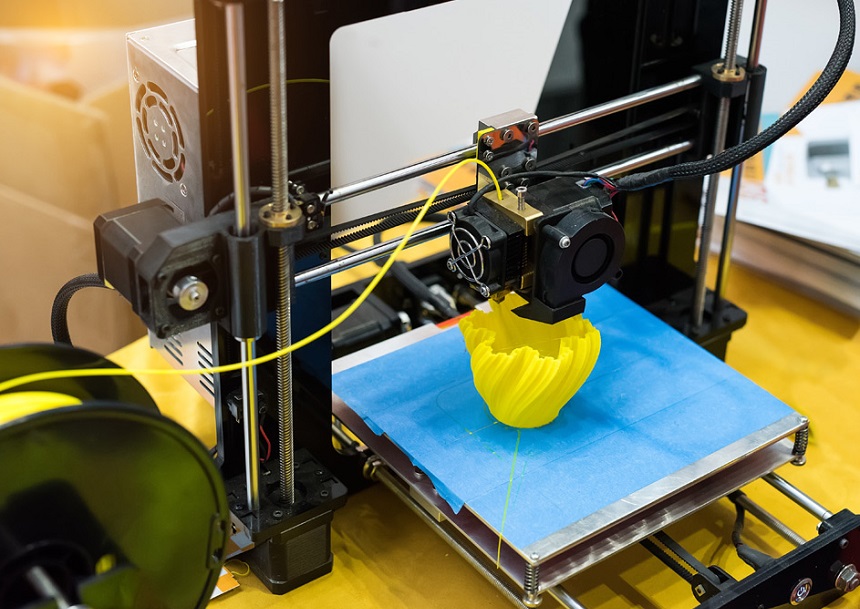
The final factor to consider when comparing the 3D printing resin vs filament is the moving parts. There are some components that you might have to replace over time and materials that you need to buy.
The resin printer has a few moving parts, with the main one being the Z-axis Lead screw. The screw is in charge of lifting the print bed as the model forms. Luckily, this part is less likely to face mechanical issues. Despite this, there are other components that need replacement. At the bottom of the vat is the FEP film, and this can bend or tear as you print more parts. It is a thin film and can cause leaks. If this happens, it’s best to replace it completely. FEP film replacement is not difficult to do, but you have to deal with securing it to the vat. Another component that you need to replace is the LCD, which can develop issues like dead pixels or regions. This will lead to holes in your print. If you want to replace the LCD, you need to disassemble the outer shell.
Filament printers need more maintenance than resin printers because it has moving parts in all three axes. Over time, these parts need replacement or tightening, but they won’t require frequent repairs. The parts you have to maintain often are those on the filament path.
For one, the extruder gear can wear out over time, and if it’s made with plastic, it can even crack. You can avoid this by purchasing a printer with a steel extruder gear and a metal extruder. The hot end has different internal components that wear out over time due to the high temperatures. You can replace the whole assembly or the individual components.
When deciding between FDM and SLA/DLP printers, you might be wondering which one is better for making miniatures.
Both printers are good for making quality prints, but the resin (SLA/DLP) printers are much better for miniatures. This is because they provide better attention to detail and finer parts, which is important when making a miniature.
If you are just starting out with making miniatures, you can consider using an FDM printer. Instead, this is less messy and easier to use, but resins produce nicer results. If you decide to use resins, follow all the safety measures. To make your choice easier, check out our list of the best 3D printers for miniatures.
Now that you understand the difference between resin and filament printers, you assess your present 3D printing needs and choose the side that works for you. Next, you should look at printers in each category to see the specs and features. If you’re purchasing for a younger person, consider one of the best 3D printers for kids instead.
Beginners can go for an FDM printer because it is safer and produces much stronger parts. It is also easier to use, and the materials will not harm your hands. On the other hand, if you are looking for finer details and smaller parts, you should go for the SLA/DLP printers instead while keeping safety precautions in mind.
In our guide, we have compared resin vs filament printing, making it easy for anyone making miniatures, models, parts, cosplay items, and more to choose the ideal one. Both printers provide quality as long as you purchase the right model.
But, you should still know the difference as this will assist you with your decision. As there are different models available, you can consider those recommended in our review or do your due research. Check the specifications and features of the printer to see if it meets your needs. Remember to consider other costs like the cost of materials and maintenance that might be required over time.
